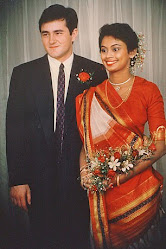wave by Sonali Deraniyagala
Sonali Deraniyagala:
Born in Colombo, studied economics at Cambridge University. She is
one of the important faculty of the Department of economics at SOAS University
of London. She lives in New York City and London.
She married economist Stephen Lissenburgh, while on vacation in
December 2004. She lost her husband, two sons, parents, best friend and her
best friend’s mother in the Indian Ocean Tsunami. It carried Sonali two miles
inland, she was able to survive by clinging to a tree branch..
Her 2013memoir “Wave” relates her terrible experience in the
Tsunami. It was shortlisted for 2013 National Book critics Circle Award and won
PEN Ackerley prize 2013. She then married to the actress Fiona Shaw.
Summary
One morning Deraniyagala and her family were on a family holiday to Sri Lanka, at the Yala National park, on the South east coast of Sri Lanka. She saw the rising waves, she grabbed her children and ran with her husband behind the hotel and into a waiting jeep. But they were driving away when the wave hit and the Jeep turned over. All over, when Sonali regained her consciousness she was bleeding, covered with mud and with her mouth full of sand. She was alone. There was no sign of her family. She is the survivor of her entire family. She recalls her painful thoughts realizing that her world has come to an end. She is taken away to her Aunt’s house in Colombo. She determines to end her life with sleeping pills, stabbing herself with a butter knife, smashing her head on the sharp corner of the wooden headboard of the bed. She surfs the internet to find painless ways of killing herself.
For months, toys, children, ball, the sound of small running
children brings back the horror and filled her with grief. She starts drinking
vodka with anti-depressants. Slowly she regains her strength to move on. She
visits and revisits the hotel where she was staying with her beautiful family
when the wave stuck.
 She comes back to London. Even then she could not live after
finding her husband’s eyelash on a pillow remains of beef curry he had cooked.
Seven years later, “their absence has expanded, everyone vanishing in an
instant, my spinning out from that mud, what is this, some kind of myth?” the
story ends with her tears.
She comes back to London. Even then she could not live after
finding her husband’s eyelash on a pillow remains of beef curry he had cooked.
Seven years later, “their absence has expanded, everyone vanishing in an
instant, my spinning out from that mud, what is this, some kind of myth?” the
story ends with her tears.
Critical Analysis
This story is narrated from the view of the author Sonali
Deraniyagala. She is the person
experienced such a painful disaster in her life due to the natural
destruction. There can no one to express
such pain other than the person who gone through it. The story is shared by the author as she
looks back her painful experiences. The
narration shifts from the past to the present.
Her family is the past and her loneliness is the present and her tears
are never ending.
Symbols and objects
The branch

Sonali with the hope of seeing her sons and in curiosity she asks the ambulance driver
whether they have her sons inside the van.
But the birth mark says they are not her kids. It is such a painful
moment.
Bruises
The bruises on her face says the disaster she faced. The trauma cannot be forgotten.
Door mat
Wave
It is the best symbol which shattered here life. The wave covered her happiness, family and
the whole world becomes the darkest place for her.
Themes, Motifs
Grief
The grief of sonali has been seen and expressed in five
stages. Denying to trust the loss and
belief in her faith to see the family.
Next bargaining to herself with various possibilities to think that this
could not have happened. Compromising to
herself, tries to calm herself that she would see the family soon depression is
not in her , but is covered and choked with depression, her pain could not be
explained but Sonalai has done, which slowly pierce the readers and reaches the
eyes to shed tears. She lived with this
pain for seven years. She could not come out of this pain.
Yala national park
Yala is one of the famous national park where the author spends her
vacation with the family at the time of Tsunami. It is no more a peaceful pale to her. It reminds a disaster. The place too has been destroyed do to
Tsunami.
Colombo
Birth place of the author.
She lived there with her parents and grew up in Colombo. After Tsunami she lived there with her Aunt
for some time to get over her pain. She
visited again and again the hotel where she spent her last happiest moments
with her family. But she could not
forget for it was a deep wound which was killing her.
It is not an easy effort to put her sorrows in words and share it with all. Her mind is not after the reaction or the awards. Her only intention is to give a try to get over her grief.
“Everyone vanishing
in an instant, me spinning out from that mud, what is this, some kind of myth?”
her survival gives her hope of seeing her family and friends. Her braveness to
deliver her grief is beyond imagination. Her whole grief is flooded the
readers.
please like, share and subscribe
visit my you tube channel
https://www.youtube.com/watch?v=bAq4ycfxqDQ&t=8s






wave changed human life
ReplyDelete